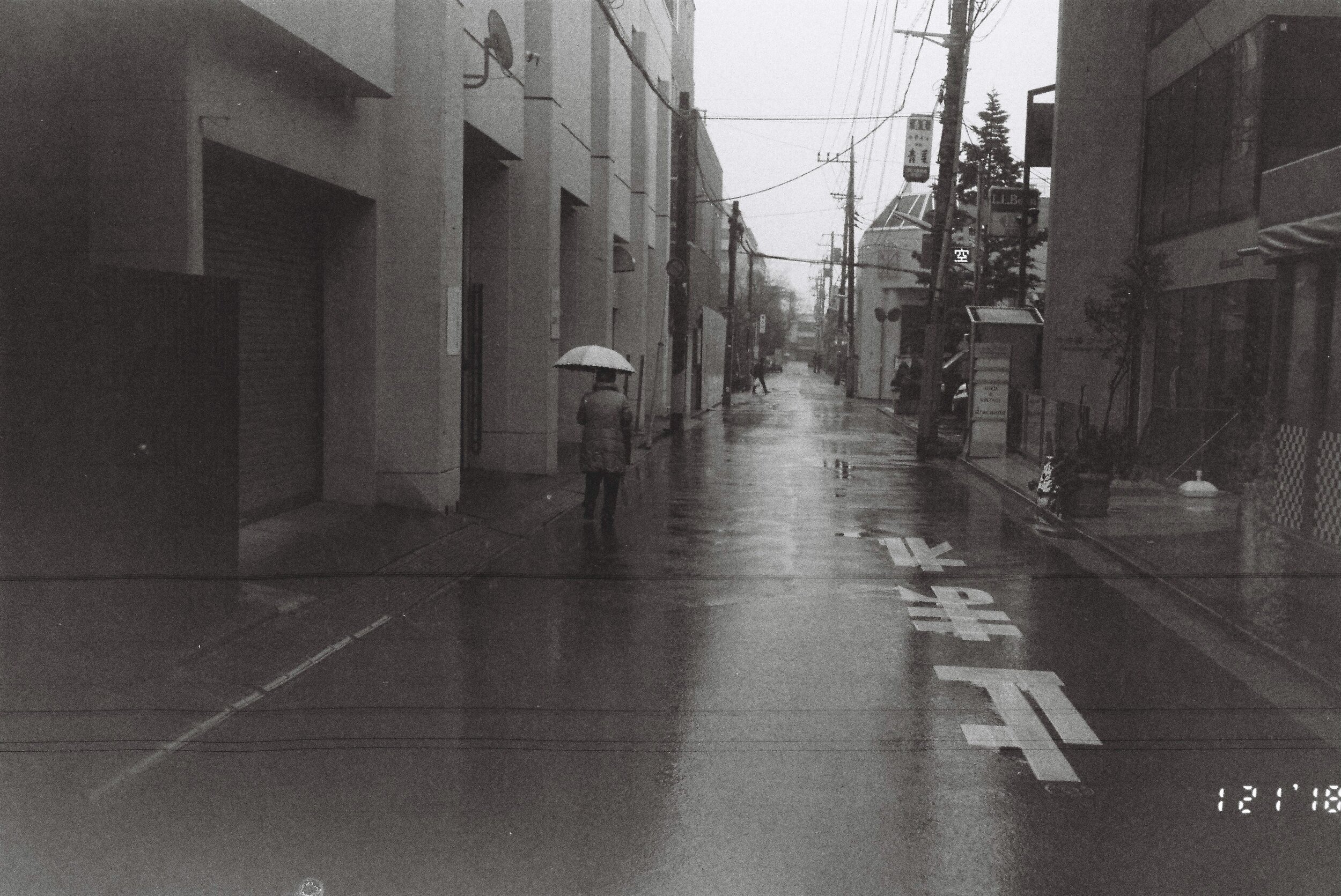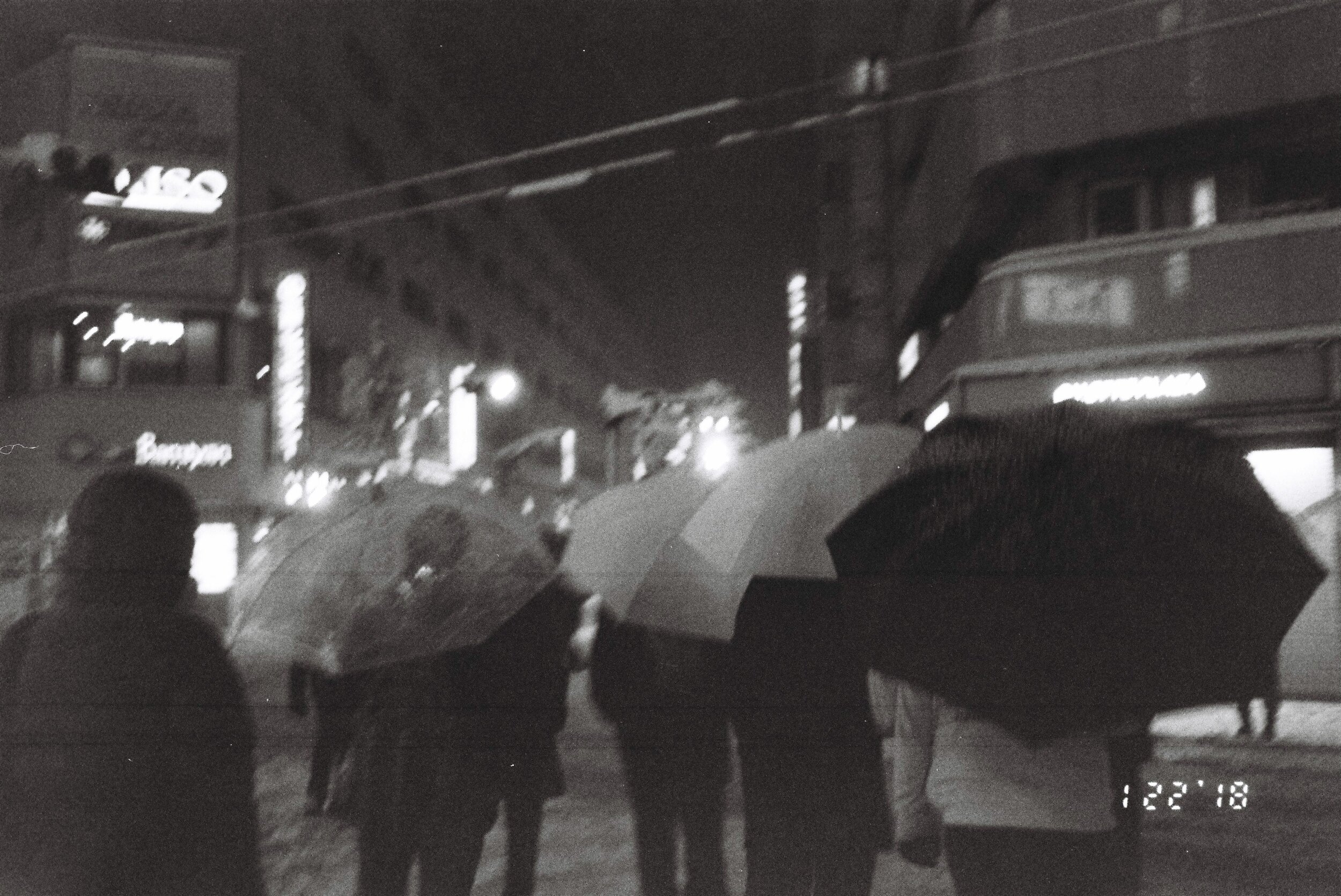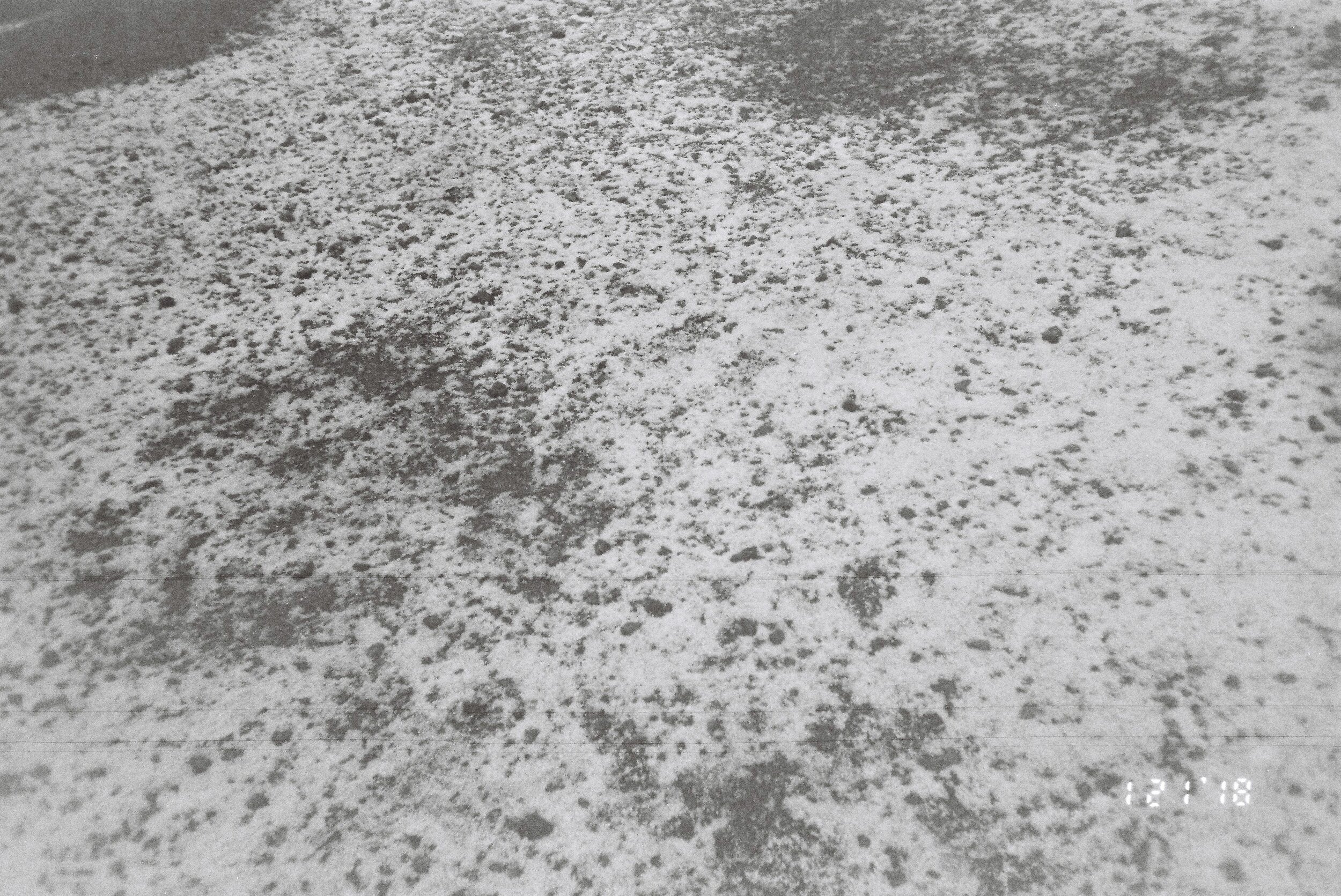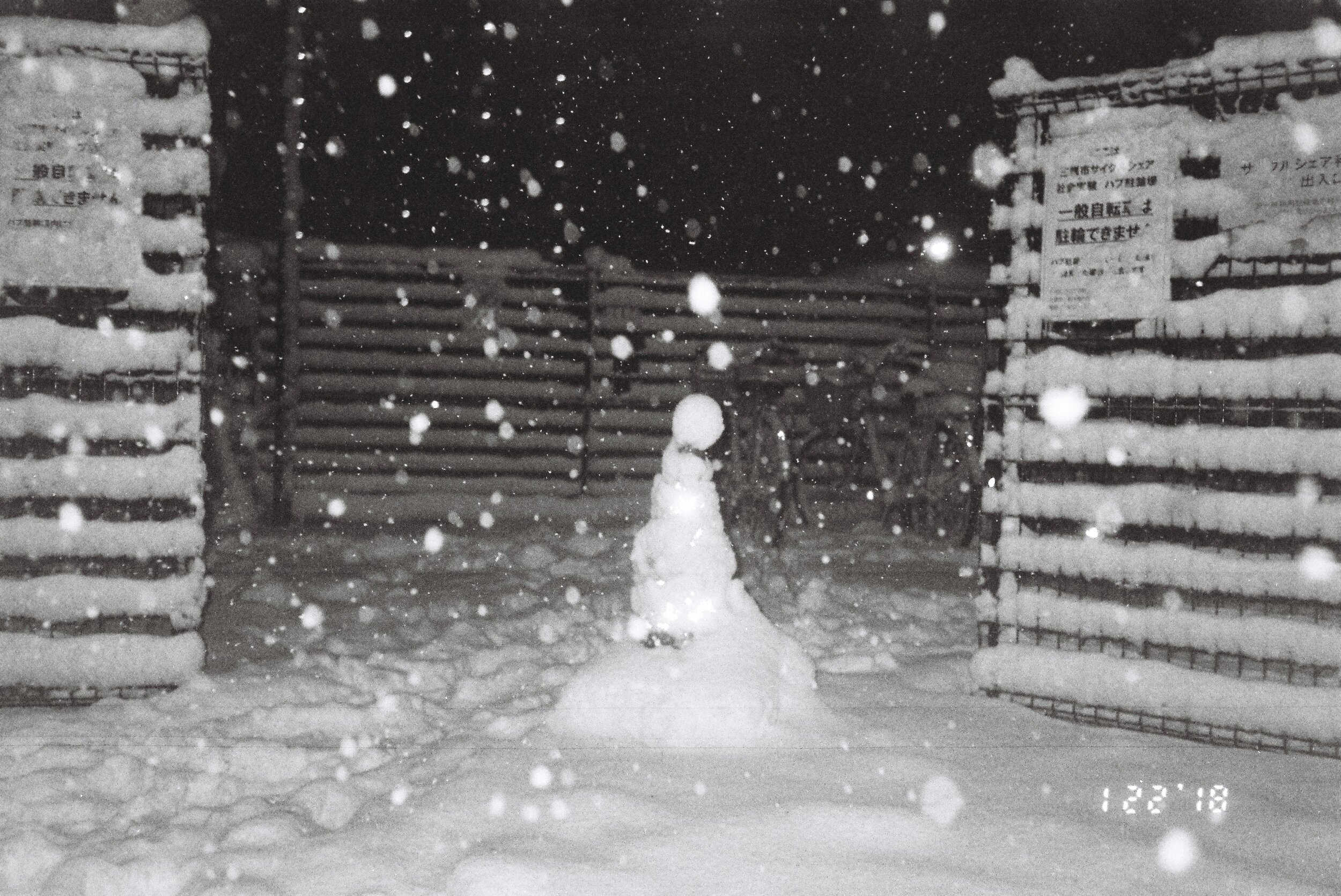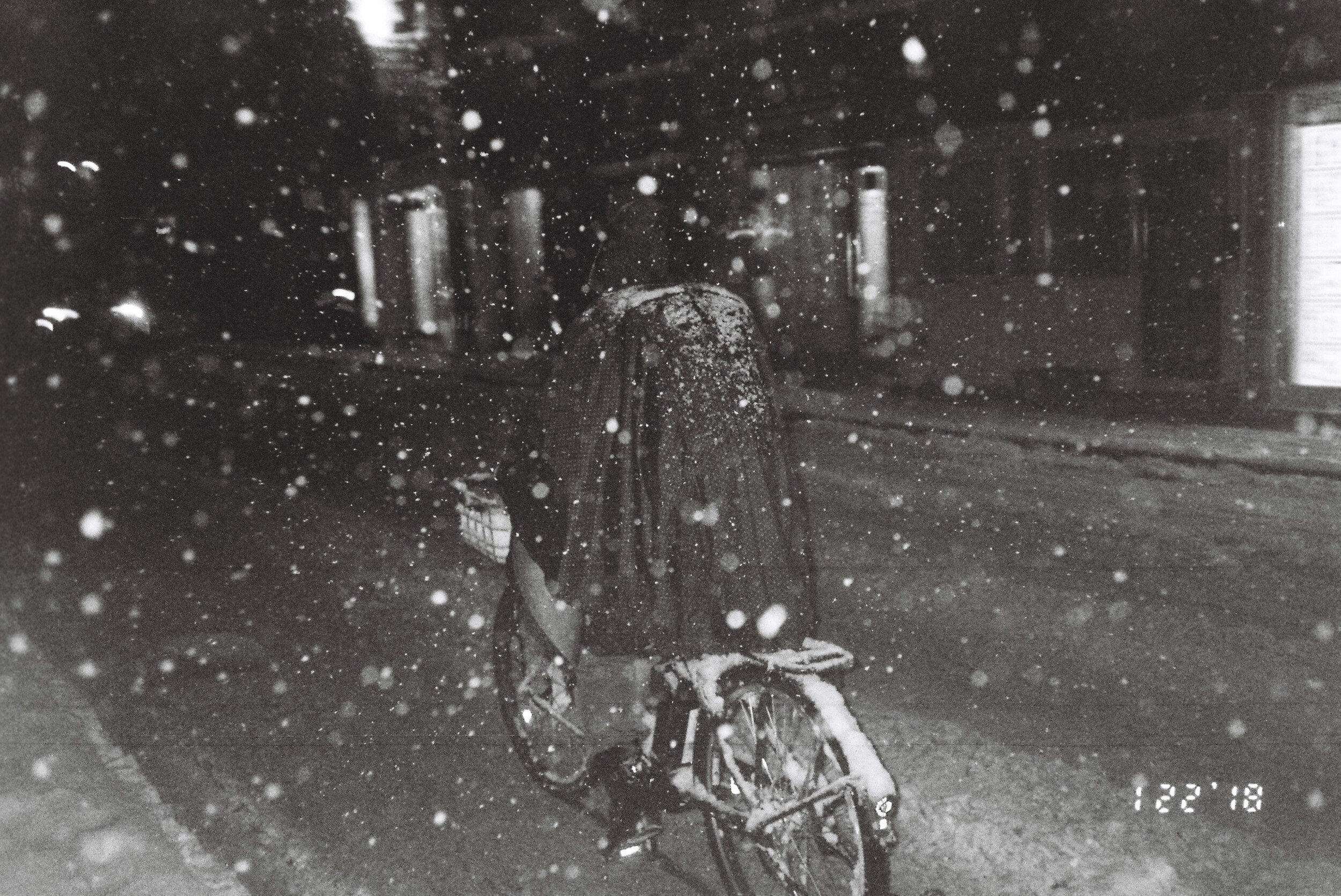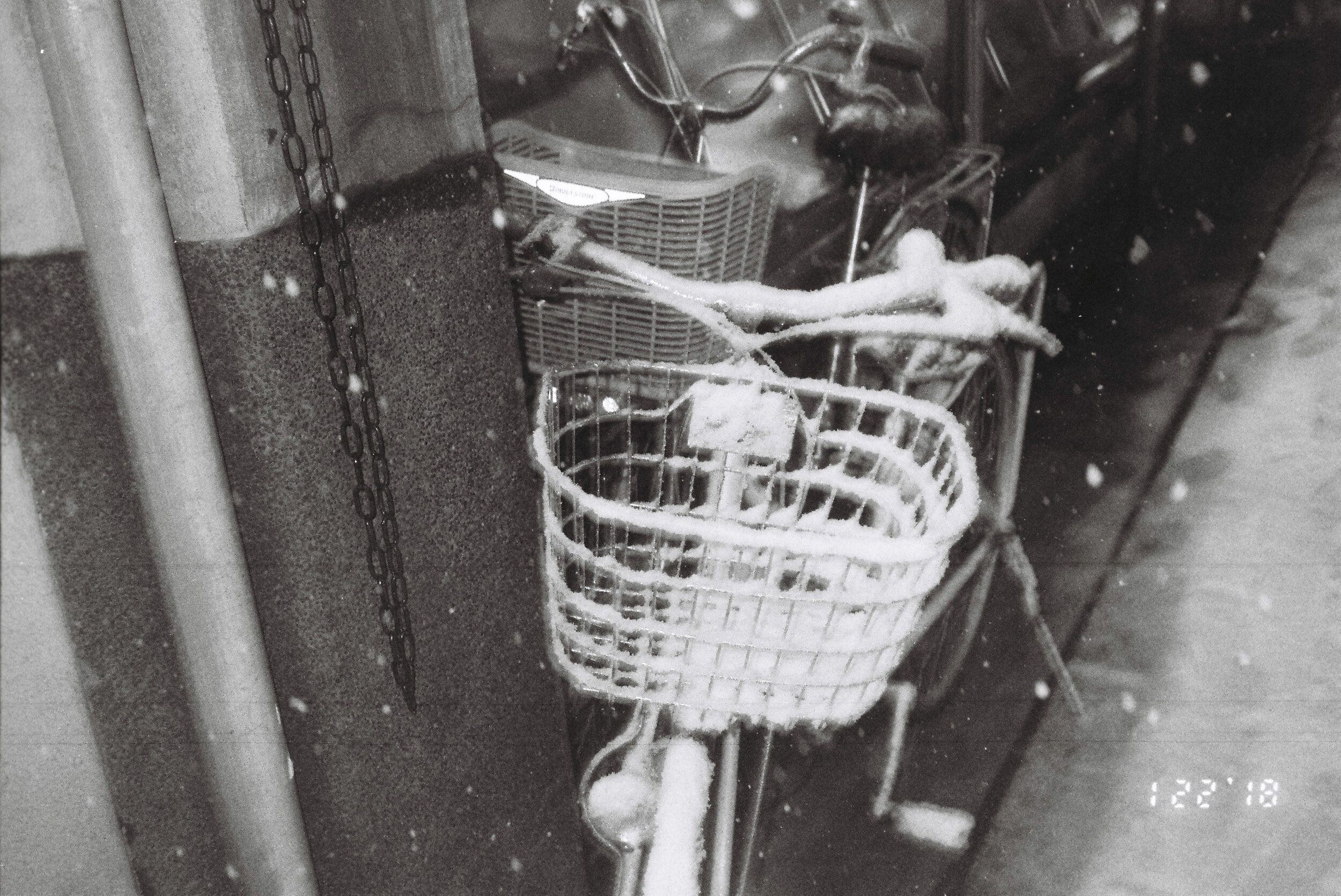Noir Myths: Erin Cross
PC: Erin Cross
Andrew D. McClees (ADM): For those not familiar with you, or your work, would you mind introducing yourself?
Erin Cross (EC): Hello, I’m Erin Cross. I am based in Tokyo, Japan. I’ve been into black and white photography for seven years now - [ED Note - you can read more about Erin’s 7 year BNW career in her own words HERE]
Formerly, I also founded MONØMANIA, the first black and white photography festival in Asia, which later turned out to be a platform.
Beginning this year, though, I decided to focus on my personal projects, specifically self-publishing photozines and (hopefully later on) photobooks.
ADM: Was there a particular personal turning point that prompted you to pursue more of your own personal projects, beyond the festival?
EC: Since I came to Japan three years ago, producing content for MONØMANIA (as a platform) and managing it by myself became a challenge. I’ve tried many times, but there was always something lacking. I realized that I need to take things slower by focusing on my personal projects first, or else my ideas will never be executed at all.
ADM: What's the concept behind "Noir Myths" - I see that it's labeled #1 - Does the series have a particular focus? and What does "cold and gray" mean to you?
EC: NOIR MYTHS is a quarterly photozine that would include visual stories of my life in Japan.
The first volume, Cold and Gray, features a set of film pictures taken on a snowy winter day in Tokyo in 2018. In contrast, I chose to publish this photo story in the summertime because on the same year, I met the love of my life who turned coldness and grayness into the opposite. A short intro can be found on the photozine’s prologue.
I sense that the next volumes of NOIR MYTHS will evolve and evolve. I am not tying this series to just film photographs - although being shot in film is one of the reasons why I wanted to publish in tangible form. I rarely upload my film photographs, so having them compiled as a zine/book emphasizes their “analogue” nature: something which is quite hard to attain nowadays.
ADM: Throughout the zine you make really excellent use of textures to create atmosphere and feeling - from an outside perspective - what would you say inspired that approach?
EC: Thank you. A huge part of this approach was because of my workshop with D’Agata and Hura. During that workshop, I was asked to explain WHY I took such photos and I had to dig really deep into my emotions. So whenever I see shining asphalt or odd-shaped trees, for example, I take pictures of them because they make me feel something. I aim to translate those feelings through my photographs.
ADM: Zooming out a bit, what are your major influences both photographic and musical, for this project and your photography beyond Noir Myths?
Photography influences - I used to draw more inspiration from films back when I started photography. Alfred Hitchcock, Jim Jarmusch, Wong Kar Wai - are some of my all-time favorites.
EC: I “discovered” Japanese [are-bure-boke] style of photography much later on. Masahisa Fukase is probably my favorite Japanese photographer.
On the other hand, music is not the strongest influence in my photography. However, I appreciate the medium and would like to utilize it to magnify the emotions that one can get from “just looking” at photographs.
When using the element of sound, I prefer instrumental only. The lack of lyrics gives attention to the imageries, which to me, is a visual symphony.
Moreover, when my friend skinxbones made the soundtrack for Cold and Gray, I let him create it solely based from the photos in the volume. I plan on collaborating with other musicians, regardless of their genre, for the next NOIR MYTHS volumes with the same “non-instructional” instructions so each time would be a fresh experience.
ADM: What's your assembly and construction process like for your zines and books?
EC: I sequence the images manually. I print very small pictures and then arrange-rearrange them to my liking. I learned a lot about making photo stories during my intensive workshop with Antoine D’Agata and Sohrab Hura in Angkor Photo. That was five years ago, but I always think about the lessons I learned there when I make photo projects now.
ADM: Do you always shoot with an overall project or book in mind?
EC: Ideas always come to me. Though sometimes, some (or probably most) of them are short-lived.
For NOIR MYTHS, though, I’d like to keep my options open. As much as I love repetition in photography, I wouldn’t like this series to appear monotonous all throughout.
Recently, I started posting diptychs of my daily home-work-home routine. I use digital for this, which is great for instantaneous output. It’s also good practice for the eye. I might turn this series into a photozine as well, but nothing yet is set in stone.
One thing is for sure, though. There will always be hints of self-portraits in my works because it’s how I can relate through photography and other people, too.
ADM: What photos or spreads within the zine do you think are most essential to understanding it - you talk briefly about tying in self portraiture and it's importance - can you expound on that as well?
EC: The entire layout of Cold and Gray is essential to appreciating it. I intentionally put two images oppositely adjacent to each other, so that the viewer can look at both images in both directions. Even the cover page (English in front, Japanese on the back) tells the viewer that the photo story can be “read” from left to right (like most Japanese publications). More importantly, the photozine should be viewed along with its special soundtrack - which I had made specifically for it.
Ironically, I didn’t include a self-portrait in Cold and Gray, though there’s a picture of my feet dug in snow - if this counts as a self-portrait. Remember that quote from Lost in Translation when Charlotte said that taking pictures of one’s feet is just every girl’s phase in photography? Guess I’m stuck in that phase forever.
ADM: The "evolution" of Noir Myths or a long term project is familiar, but always fascinating to me. Do you know what you'll do next with it, or have a more specific idea of the next form it will take in the series?
EC: N°2 should come out in late November. It will be very different from Cold and Gray, in the sense that the film pictures won’t come from a single roll. I am collaborating with another musician, whose music I’ve recently discovered. And as for the the visual content, here’s a hint: Nature devours.
ADM: Getting into the music question - how do you fit music together with your photography, or what's your process for creating intertextual experiences between music and photos?
EC: Might have already answered this - But here’s an old photo series (as a slideshow) with music specifically made for it.
ADM: What advice would you give to someone aiming to do a regular zine - ie on a schedule like you're aiming to do your Noir Myths series on?
EC: For any photography project that requires religious updates, the only thing that you can trust or blame is yourself. You move at your own pace. You lag at your own pauses.
With NOIR MYTHS, I plan to release a new volume every time the season here in Japan changes. I think this allows me to come up with the next one without hurrying so much.
I also think that even the rise and fall of temperature influences my motivation a lot. I find it hard to progress in the summertime, but when it's cooler, I suddenly become unstoppable.
ADM: From Kyle J. Kohner: Outside of other photographers and photobooks, where do you find inspiration for your own photography?
EC: Aside from films, which I mentioned in #9, I also draw inspiration from all the daily scenes I encounter, which is probably why I like repetition in photography.
For instance, I pass by the same train stations to and from work, and to me, looking closer at the usual, ordinary things I see along the way allow me to see them differently.
I try to be inspired even if there's "nothing" to see. It's my own way of interpreting bits of my life here. A life less ordinary.
ADM: What question do you have for the next photographer? you can answer it yourself if you'd like.
EC: For the next photographer: If there is a single photo story that you can work on in your lifetime, what would that be and how would you create your images for it?
For me, I would love to work on a very intimate photo story of my family and I would like to do it for as long as I live. It sucks that we're all living in different places now and I only have a few portraits of my mom, dad, and siblings.
ADM: Thanks so much for doing the interview! Where can we see more of your work, and purchase a copy of NOIR MYTHS (both this issue and the upcoming one, when it becomes available)? Do you have any other parting words and advice?
EC: NOIR MYTHS is available through erincrxss.com and also on KungFu Camera, The Phooks, artbooksph, and soon on Unobtanium — to mention a few

